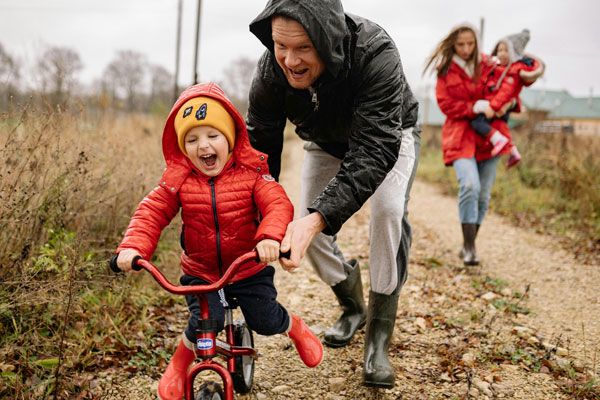Many parents often think about taking the reins of their child’s education from home. And many would argue that education is fundamentally the responsibility of households over the state or private educational institutions. It’s a big job, most parents who’ve done it testify that it is super rewarding. Whether you’re into homeschooling or just giving their after-school learning a boost, it’s all about making learning fun and effective. Today we’ll walk you through some of the key strategies to help you feel confident and prepared. We’re going to explore what it takes to create a learning environment, constructing up a solid curriculum, and cultivating a real love for learning. Isn’t it exciting to think about crafting an educational experience that’s tailor-made for your child? Imagine the satisfaction when you see them mastering concepts right in your living room.

Creating A Conducive Learning Environment
Designating The Learning Space
First things first: where’s all the learning magic going to happen? Pick a spot that’s all theirs, away from all the distractions that pry children away from learning. It’s all about creating a space where they can focus on their learning. Make it cozy, make it inviting, and watch them want to learn. This spot will become a sanctuary of knowledge, where each lesson becomes an adventure. As you set up this space, think about what inspires your child—maybe bright colors, or perhaps calm, neutral tones?
Optimizing The Learning Area
Light and space matter more than you think. A well-lit, airy space can boost energy levels and keep those young minds sharp and ready. Oh, and a comfy chair doesn’t hurt either! In fact, a comfortable chair and desk are essential for successful learning. Proper lighting reduces eye strain, especially during those long reading sessions or while writing. Add some plants for a bit of oxygen boost, and you’ve got a prime spot for educational excellence.
Establishing Routines
The value of routines in learning is often overlooked, but the reality is that kids thrive on routine. They might not always like the routine, but it certainly does align with better learning outcomes. Set up a schedule that mimics school hours if you’re doing homeschooling; if you’re supplementing school, then build a routine around the core school schedule. Just remember it’s all about balance though—rigid enough to build discipline but flexible enough to adapt to your child’s pace. They’ll know what to expect and that makes everything smoother. With consistency, you’ll find that managing their learning becomes much easier, and they’ll feel secure in knowing what comes next. It’s all about creating a rhythm that works for your family.
Adapting To Learning Styles
Every kid’s different and that’s a great thing! Maybe yours is a visual learner or maybe they learn by doing. Tailor your teaching to match their learning preferences. It’ll make all the difference, boosting both their learning and your teaching satisfaction. Recognizing and embracing these unique styles not only enhances learning but also helps in maintaining their interest and enthusiasm. It’s about supporting their natural tendencies while challenging them to grow.
Promoting Organizational Skills
Here’s a cool idea: have them organize their learning space. It teaches responsibility and hey, life skills! Plus, a tidy space equals a tidy mind. When they’re involved in setting up their own learning environment, they’re more likely to take care of it and feel proud of their space. Also allow them to take part in the monitoring process which checks that certain things are being done according to plan, whether that is a writing checklist or a marking sheet. This small step is a big leap towards nurturing an independent learner who takes charge of their education. It’s never too early in life to learn ownership.
Building An Independent Learning Ethic
As soon as you can, start shifting some of the responsibility onto their shoulders. Little by little, let them take the lead. It builds confidence and, let’s face it, it’s a break for you too! Encouraging this independence isn’t just about easing your load—it’s about preparing them for the real world. As they grow more confident in their abilities, their love for learning independently will naturally blossom.

Developing A Robust Curriculum
Core Academic Foundations
To start with you need to get the basics down. Whether it’s math, science, or reading, these are your pillars. Build a strong foundation here and everything else grows sturdier. Ensure that each subject is approached with depth and practical applications to connect theory with the real world. Remember, a robust foundation today sets the stage for advanced learning tomorrow.
Integrating Creative Arts
Every child is born with creativity and imagination. Throw in some art, music, or drama to spice things up. It’s all about balance and tapping into their creative potential. Plus, who doesn’t like a bit of paint and pretend now and then? These creative outlets are not just fun—they’re crucial for developing cognitive abilities and emotional intelligence. Let their imagination run wild; it’s as important as the ABCs and 123s.
Exploring Technology And Media
Here is an inescapable reality – tech skills are non-negotiable in today’s world. You have no choice but to let them start with gadgets and gizmos—not just for games, but for learning too. Safe and smart internet use starts here! Equip them with the skills to navigate the digital world responsibly and effectively. From coding to using educational apps, tech can be a game changer in how they learn and interact with the world.
Including Physical Education
Many parents wrongly believe that education is all about learning in the classroom with their noses in the book. However, getting physical is a big part of learning. So, get moving! Regular physical activity is key to health, and it teaches teamwork and perseverance. Whether its dances in the living room or tag in the backyard, every bit counts. Physical education doesn’t just keep them fit; it helps develop a healthy mind and a disciplined attitude. Plus, it’s a great way for them to burn off that excess energy.
Enhancing With Electives
What lights up your child’s eyes? Coding? Cooking? Let their interests guide some of their learning. It keeps them engaged and gives them a sense of control over their education. This is the part of the curriculum that can be tailored to their passions, which can lead to deep dives into subjects they love. It’s really about fostering a lifelong love of learning, right in their favorite topics. Don’t make the mistake of forcing them to learn certain things they’re not interested in yet, you might just push them away from those topics if they’re not interested in them.
Using Community Resources
Don’t forget the world outside! Libraries, museums, and local businesses are massive learning opportunities. Real-world connections make book learning come alive. These experiences enrich the curriculum and provide a broader perspective that textbooks alone cannot offer. They’re invaluable for teaching practical life skills and for broadening their horizons. After all, there is a saying that it takes a village to raise a child.

Nurturing A Culture Of Learning
Developing Critical Thinking
Encourage questions. Lots of them. Get them to think, challenge, and explore ideas. It’s about learning to think, not just learning to remember. This approach not only sharpens their minds but also prepares them to face complex problems with confidence. Critical thinking is a skill they’ll use for life, not just in school.
Encouraging Reading And Literary Appreciation
Make books a big deal. Different genres, different subjects—mix it up! Reading’s not just about stories; it’s about opening doors to new worlds. Instill a love for reading by choosing a variety of materials—fiction, non-fiction, poetry, and everything in between. Reading broadens their understanding and enriches their vocabulary and comprehension skills. And a big plus, reading fuels their imagination.
Promoting Scientific Inquiry
Nothing beats seeing your child’s eyes light up when they discover something on their own. Set up mini-experiments, go on nature walks, and let them explore the world with you! This hands-on approach not only makes learning fun but also cements scientific concepts in a tangible way. It’s about nurturing their natural curiosity and creating a scientific mindset that will guide them through life.
Engaging With Current Events
While this might require more effort from you as the parent, it can yield serious educational results. Talk about the news, the good and the tough stuff. It’s important they understand their world and feel they can engage with it meaningfully. This dialogue helps them develop a sense of empathy and a deeper understanding of their community and the world. It’s crucial for raising informed, conscientious citizens.
Emphasizing Lifelong Learning
The reality is that none of us stop learning. Many children nowadays think of school graduation or a degree as the end of their learning journey. Show them that learning doesn’t stop at the classroom door—it’s a lifelong adventure. Model curiosity and enthusiasm for learning yourself. It’s contagious! Reinforce that learning is a continuous journey, filled with endless opportunities to grow and evolve. Celebrate each discovery, each question, each effort—it’s all part of a larger quest for knowledge.
Celebrating Diversity And Multiculturalism
Show your kids the value in diversity. Dive into other cultures, languages, and traditions. It’s a big world out there, and every bit of it is a lesson in humanity and humility. Exposure to diverse cultures promotes acceptance and helps children appreciate the different ways people live and think around the globe. It’s about preparing them to thrive in a connected, multicultural world.
Leading your child’s education at home is an adventure—it’s about guiding, inspiring, and sometimes just keeping up with your curious little learner. By creating a nurturing environment, building a solid and stimulating curriculum, and fostering a genuine culture of curiosity, you’re setting up your child for a lifetime of learning. Remember, every day is different, and that’s perfectly fine.

Leave a Reply